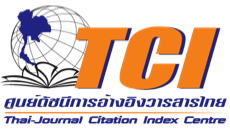การประเมินหลักสูตรภาคการจัดการเรียนรู้ส่งเสริมทักษะภาษาอังกฤษ (English Program) โรงเรียนสาธิต มหาวิทยาลัยศิลปากร (ปฐมวัยและประถมศึกษา) (The Curriculum Evaluation of The English Program Curriculum at The Demonstration School of Silpakorn University (Early Childhood and Elementary))
คำสำคัญ:
ประเมินหลักสูตร, หลักสูตรภาคการจัดการเรียนรู้ส่งเสริมทักษะภาษาอังกฤษบทคัดย่อ
การวิจัยนี้มีวัตถุประสงค์เพื่อ 1) ประเมินหลักสูตรภาคการจัดการเรียนรู้ส่งเสริมทักษะภาษาอังกฤษ (EP) 2) ศึกษาแนวทางการพัฒนาหลักสูตรภาคการจัดการเรียนรู้ส่งเสริมทักษะภาษาอังกฤษ (EP) กลุ่มผู้ให้ข้อมูลประกอบด้วย 1) ผู้เชี่ยวชาญด้านหลักสูตรและการสอน ด้านการศึกษาปฐมวัย ด้านภาษาอังกฤษ จำนวน 5 คน 2) ผู้บริหารสถานศึกษา จำนวน 5 คน 3) อาจารย์ประจำหลักสูตรภาคการจัดการเรียนรู้ส่งเสริมทักษะภาษาอังกฤษ (EP) จำนวน 5 คน 4) นักเรียนระดับชั้นอนุบาลปีที่ 1–3 หลักสูตรภาคการจัดการเรียนรู้ส่งเสริมทักษะภาษาอังกฤษ (EP) ปีการศึกษา 2562 จำนวน 43 คน 5) ตัวแทนกรรมการสถานศึกษา จำนวน 3 คน 6) ตัวแทนสมาคมผู้ปกครองและครู จำนวน 3 คน และ 7) ตัวแทนผู้ปกครองนักเรียนระดับชั้นอนุบาลปีที่ 1–3 หลักสูตรภาคการจัดการเรียนรู้ส่งเสริมทักษะภาษาอังกฤษ (EP) ปีการศึกษา 2562 จำนวน 44 คน การวิจัยนี้ เป็นการวิจัยเชิงประเมินโดยใช้ CIPP Model เครื่องมือที่ใช้ในการวิจัยได้แก่ แบบสอบถามและแบบสัมภาษณ์ จำนวน 6 ชุด วิเคราะห์ข้อมูลโดยการวิเคราะห์เนื้อหา (Content Analysis) สำหรับข้อมูลเชิงคุณภาพ และการวิเคราะห์ข้อมูลเชิงปริมาณโดยใช้วิธีการแจกแจงความถี่ ค่าร้อยละ ค่าเฉลี่ย () และส่วนเบี่ยงเบนมาตรฐาน (S.D.) ผลการวิจัยพบว่า 1. ผลการประเมินหลักสูตรภาคการจัดการเรียนรู้ส่งเสริมทักษะภาษาอังกฤษ (EP) ด้านสภาวะแวดล้อม ด้านปัจจัยนำเข้า ด้านกระบวนการ มีความเหมาะสมดีทั้งในภาพรวมและรายด้าน และด้านผลผลิต อยู่ในระดับมากทั้งในภาพรวมและรายด้าน 2. ผลแนวทางการพัฒนาหลักสูตรคือ ควรมีการขยายห้องเรียนให้กว้างขวาง เพิ่มพื้นที่ในการทำกิจกรรมให้เหมาะสมกับจำนวนเด็ก เพิ่มบทบาทครูต่างชาติในห้องเรียนให้มากยิ่งขึ้น
เอกสารอ้างอิง
Apiradee Chaiyakan. (1994). A Development of Thai as a Second Language Instructional
Model Based on Cultural and Community Approach by Integrating the Oral
Approach with the Code-Swiching to Enhance Listening and Speaking Ability
of Transition Students Towards First Grade. Doctor of Philosophy Program in
Early Childhood Education Degree Dissertation Chulalongkorn University,
Thailand.
Arunee Holadah. (1996). Bilingual children: Starting from pre-school age. Journal of
Education Naresuan University, 18(1), 130-131
James J. Heckman. (2012). Invest in Early Childhood Development: Reduce Deficits,
Strengthen the Economy. Available from http://heckmanequation.org/resource/invest-in-early-childhood-development-reduce-deficits-strengthen-the-economy/.
Methavee Tunwattanapong et al. (2017). A Developmental Study of ThaiI early
Chihood Studying English with an American Teacher. The 2nd National
Research Conference, Research 4.0 for Development country towards stability,
wealth and sustainability. Ubon Ratchathani: Ratchathani University, 1434-
Ministry of Education (2017). Early Childhood Education Curriculum 2017, Bangkok: the
Agricultural Co operative federation of Thailand press.
Rattana Buosonte. (2019). Research and Development in Curriculum and Instruction University
(1), 130-131 Silapakorn Educational Research Journal 11 (2) 1 – 11.
Somchitra Ruaengsri Taviga Tungprapa Yaowapa Sankhiao. (2017). An Evaluation of the
Master of Education Program in Educational Evaluation and Research (revised
a.d. 2012), Ramkhamhaeng University Silapakorn Educational Research
Journal 9 (1) 57 – 71.
Stufflebeam, D.L., et al. (1971). Educational Evaluation and Decision-Making. Itasca,
Illinois: Peacock Publishing.
Tyler. (1949). Basic principles of curriculum and instruction. Chicago: the University of
Chicago Press.
Wichai Wongyai, Marut Phatpol. (1991) From the core curriculum to the
educational institution curriculum Development Paradigm. Bangkok:
Charan Sanit Wong printing.





